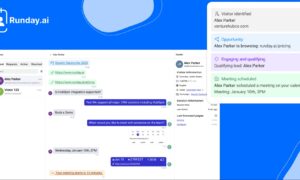Customer service has become an integral part of businesses looking to create value, boost revenue, and inspire loyalty. Both, call center and contact centers have common purpose i.e., to serve the customer. Even though both seem synonymous, they differ significantly. Call centers are traditional customer service models which rely on phone support as the main contact method. However, with the evolution of technology, brands are going beyond traditional models to connect with customers and deliver a memorable experience. Contact center is an evolved version of call centers enabling robust communication with customers through multiple channels. Here, we discuss the key differences between the two.
Channel
Call centers primarily focus on phone-based customer communication. Agents generally make inbound and outbound calls, either on traditional phone lines or via VoIP. This may not be the preferred communication method for all customers. Call centers can experience high call volume, which results in long wait times and frustrated customers. Along with phone support, contact centers are also equipped to handle a wide variety of communications through multi-channel support including email, live chat, messaging, video, screen sharing, and social media among others. Contact centers can provide more personalized service, as agents have access to more customer information across multiple channels. Call centers can be impersonal, as agents are often required to follow scripts and adhere to specific guidelines.
Usage
Call centers can offer a wide range of specialized services, including customer support, technical assistance, and sales support. While Inbound call centers serve as a knowledge hub for tech support, billing questions, and more. Here, agents mostly provide on-the-phone support and aim to offer quick resolution to customer queries. In outbound call centers, agents make calls rather than receive them. These could be sales calls, marketing offers, surveys, fundraising requests, or debt collection. In contact centers, technical support can also be delivered vis in-app chat or video, customers can get order updates through sms, products can be promoted via push notifications, conduct surveys & polls through social media, and many other touchpoints can be explored to improve customer experience.
Agent utilization
Call centers depend on agents. Since phone conversations happen in real-time, agents have to engage directly. This exhausts an agent’s bandwidth. During peak volumes, the only solution is to increase manpower. Businesses hire and trim agents as needed without scaling. Contact centers empower agents by offering multi-channel support. Agents can easily handle 3-4 chats & email conversations concurrently & significantly reduce the average handling time. They can scale up & down the service without scaling their teams.
Workload distribution
Modern call center software can automatically distribute and route calls to agents with the right set of skills. Contact centers, on the other hand, use omnichannel contact center software that streamlines by updating all available customer service and communication channels in real time. This means interactions can be synced across channels helping agents see past interactions. Contact centers can improve efficiency by automating processes, and routing tickets to the right agents based on keywords, previous customer history, agent skills, and channel. In addition, they can deliver faster resolutions.
Self Service
Call centers use IVR solution to enable customers to resolve issues on their own & get connected to the right agent if needed. The process, however, is time-consuming as customers often have to wait in call queues & struggle to find the right mode to contact an agent. Apart from an efficient IVR solution with skill& priority-based routing, contact centers also offer chatbot support to enable quick resolution of issues. AI-powered chatbots are increasingly humanizing the self-service experience and connecting customers with agents if further support is needed. Self-service support has reduced agent workloads, sped up the resolution process & helped contact centers become more efficient.
Proactive/Reactive
Call centers are known to be reactive customer support centers where the customer is the first to reach out and agents respond to crises and issues as they arise. Even if data is captured, without streamlined communications, their utility remains far from optimal. Contact centers, on the other hand, constantly work on improving the customer experience by anticipating customer needs & problems. They also take measures to prevent them from happening in the first place. Proactive service means the business initiates contact through email, calls & surveys, creates a knowledge base, and monitors social media among others.
Customer Journey View
Call centers dependent on phone support can only compile data based on telephone conversations. Even if the call center offers multi-channel support, without a centralized system, interactions get siloed, resulting in fragmented service. This can only provide an incomplete view of the customer journey & the service experience is likely to be far from effective. On the other hand, contact centers use robust telephony solutions with deep CRM integration linking different departments across your business. This can help businesses track, coordinate, and manage all interactions with customers and deliver a consistent, contextual, and personalized experience.
Which One is Right for Your Business?
While choosing between a call center and a contact center, businesses must understand their unique needs. It also depends on budget, operational requirements, and customer expectations. If the business only requires simple phone-based communication, then call centers may be the right option Call centers may be cost-effective in the short run with low investment in telephone, script, & call center software but contact centers offer a more comprehensive and personalized customer service experience across multiple channels.



































